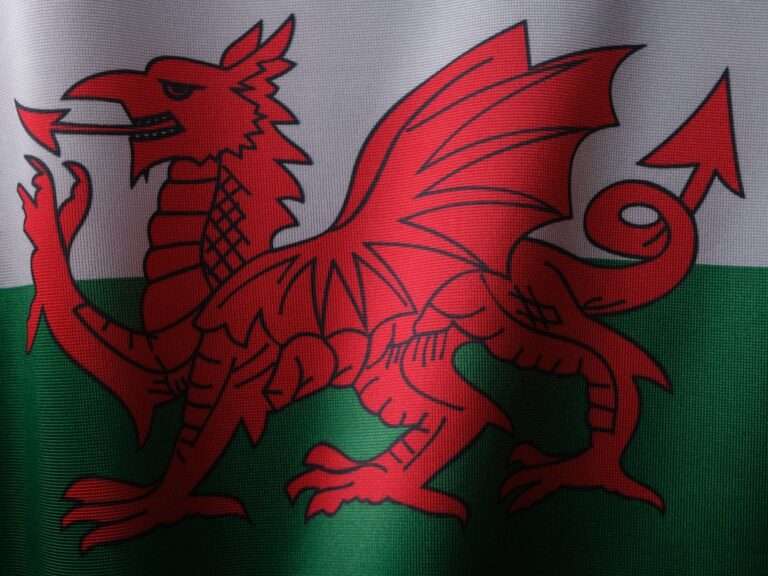Unlocking the Power of Symbolism: The Key to Understanding Hidden Meanings

Symbolism is an integral part of human communication and understanding. It helps us express complex ideas and emotions through simple and universal images. Symbolism is present in every aspect of our lives, from language to art to religion. It allows us to convey meaning beyond the literal, tapping into the deeper layers of our consciousness.
Symbols have the power to transcend cultural and linguistic barriers, as they speak to something universal within us all. They can evoke emotions, memories, and associations that are deeply personal and yet shared by others. Whether it’s a red rose symbolizing love or a dove representing peace, symbols have the ability to communicate profound ideas and emotions in a way that words alone cannot.
Key Takeaways
- Symbolism plays an important role in our lives.
- Archetypal symbols have significant meaning and influence.
- Symbolism has evolved over time and across cultures.
- Archetypal symbols are commonly used in literature, art, dreams, and myths.
- Understanding symbolism can lead to personal growth and transformation.
The Definition and Significance of Archetypal Symbols
Archetypal symbols are universal and timeless images that represent fundamental human experiences and emotions. They are deeply ingrained in our collective unconscious and have been used throughout history in myths, religions, and art. These symbols tap into something primal within us, connecting us to our shared humanity.
Archetypal symbols have a powerful impact on our psyche. They can evoke strong emotions and reactions, often on a subconscious level. For example, the image of a snake may elicit feelings of fear or danger, while the image of a mother figure may evoke feelings of comfort and nurturing. These symbols have been used for centuries to convey deeper meanings and themes in literature, art, and religious rituals.
The Origins and Evolution of Symbolism
Symbolism has been used by humans since prehistoric times, as evidenced by cave paintings and other artifacts. These early symbols were often representations of animals or natural elements, such as the sun or moon. Over time, symbolism evolved and became more complex, taking on different meanings and associations.
The study of symbolism has been an important part of many fields, including anthropology, psychology, and literature. Scholars and researchers have sought to understand the origins and meanings of symbols, as well as their cultural and historical context. This interdisciplinary approach has shed light on the power and significance of symbolism in human culture.
The Role of Archetypal Symbols in Literature and Art
| Archetypal Symbol | Meaning | Examples in Literature | Examples in Art |
|---|---|---|---|
| The Hero | A character who embarks on a journey to achieve a goal or overcome a challenge | Harry Potter, Frodo Baggins, Katniss Everdeen | David, Hercules, Saint George |
| The Shadow | A character who represents the darker side of human nature or the antagonist | Voldemort, Sauron, Darth Vader | The Devil, Medusa, Grendel |
| The Wise Old Man/Woman | A character who provides guidance or wisdom to the hero | Gandalf, Dumbledore, Yoda | The Oracle, Merlin, Athena |
| The Trickster | A character who uses humor or deception to challenge authority or disrupt the status quo | Loki, Puck, Bugs Bunny | The Joker, Coyote, Anansi |
| The Mother | A character who represents nurturing, protection, and unconditional love | Mrs. Weasley, Molly Grue, Ma Joad | The Madonna, Demeter, Gaia |
Archetypal symbols are often used in literature and art to convey deeper meanings and themes. They can add richness and complexity to a work, and help the reader or viewer connect with the material on a deeper level. For example, the hero’s journey is a common archetypal symbol in literature, representing the protagonist’s transformation and growth throughout the story.
In art, symbols can be used to convey abstract concepts or emotions that are difficult to express through words alone. Artists often use symbols to create visual metaphors that invite the viewer to interpret and engage with the artwork on a personal level. For example, the use of a broken mirror may symbolize shattered illusions or self-reflection.
The Psychology of Symbolism: Understanding the Unconscious Mind
Symbolism is closely tied to the workings of the unconscious mind. It can reveal hidden desires, fears, and motivations that we may not be aware of consciously. Carl Jung, a Swiss psychiatrist and psychoanalyst, believed that symbols were manifestations of archetypes within the collective unconscious.
Understanding the psychology of symbolism can help us better understand ourselves and others. By analyzing the symbols that appear in our dreams, for example, we can gain insight into our innermost thoughts and feelings. Similarly, studying the symbols that appear in myths and fairy tales can provide a window into the human psyche.
The Power of Archetypal Symbols in Dreams and Myths

Dreams and myths often contain powerful archetypal symbols that can provide insight into our innermost thoughts and feelings. Analyzing these symbols can help us better understand ourselves and our place in the world. For example, the serpent is a common archetypal symbol that appears in many myths and religious texts, representing both wisdom and temptation.
Similarly, the tree of life is a symbol that appears in many different cultures and religions, representing the interconnectedness of all living things. The flood is another archetypal symbol that appears in myths from around the world, often representing a cleansing or rebirth.
Decoding Symbols: The Art of Interpretation
Interpreting symbols requires a deep understanding of their cultural and historical context, as well as an awareness of the individual’s personal associations with the symbol. There are many different approaches to interpreting symbols, including psychoanalytic, mythological, and cultural.
The art of interpretation requires both knowledge and intuition. It involves looking beyond the surface meaning of a symbol and delving into its deeper layers of significance. It also requires an openness to multiple interpretations, as symbols can have different meanings for different individuals or cultures.
The Cultural and Historical Context of Symbolism
Symbols are deeply rooted in cultural and historical contexts, and their meanings can vary widely across different cultures and time periods. Understanding the cultural and historical context of a symbol is essential to interpreting it accurately. For example, the swastika is a symbol that has been used for thousands of years in various cultures to represent good luck or well-being. However, due to its association with Nazi Germany, it has become a symbol of hate and oppression in many parts of the world.
Similarly, the cross is a symbol that has different meanings across different cultures and religions. In Christianity, it represents the crucifixion and resurrection of Jesus Christ. In ancient Egypt, it represented life and fertility. Understanding these cultural and historical associations is crucial to understanding the meaning of a symbol.
Using Symbolism for Personal Growth and Transformation
Symbolism can be a powerful tool for personal growth and transformation. By exploring the meanings and associations of symbols, we can gain insight into our own psyche and work towards personal healing and growth. For example, dream analysis is a common practice that involves interpreting the symbols that appear in our dreams to gain a deeper understanding of ourselves.
Meditation is another practice that can involve working with symbols. By focusing on a particular symbol during meditation, we can tap into its deeper meaning and explore its significance in our own lives. Creative expression, such as writing or painting, can also be a way of working with symbols to explore our inner world and bring about personal transformation.
Embracing the Power of Symbolism in Our Lives
Symbolism is a fundamental part of human communication and understanding. By embracing the power of symbolism, we can deepen our understanding of ourselves and the world around us. Whether through literature, art, dreams, or personal exploration, symbolism has the power to transform our lives. It allows us to tap into something universal within us all and connect with others on a deeper level. By delving into the rich world of symbols, we can unlock new insights and perspectives that can enrich our lives and help us navigate the complexities of the human experience.
If you’re interested in exploring more symbolism, you might find the article on “The Symbolism of the Sun” intriguing. This article delves into the various meanings and interpretations associated with the sun in different cultures and belief systems. From representing life and vitality to symbolizing enlightenment and spiritual awakening, the sun holds a significant place in symbolism. To learn more about this fascinating topic, check out the article here.
FAQs
What is symbolism?
Symbolism is the use of symbols to represent ideas or qualities. It is a literary device that enhances the meaning of a text by adding layers of interpretation.
What are some common symbols?
Common symbols include animals, colors, objects, and natural phenomena. For example, a dove is often used to symbolize peace, while the color red can symbolize love or danger.
What is the importance of symbolism in literature?
Symbolism adds depth and complexity to literature by allowing writers to convey abstract ideas and emotions through concrete images. It also allows readers to engage with the text on multiple levels and interpret it in their own way.
How does symbolism differ from allegory?
While both symbolism and allegory use symbols to represent abstract ideas, allegory is a more structured and intentional use of symbols to convey a specific message or moral lesson.
What are some famous examples of symbolism in literature?
Some famous examples of symbolism in literature include the green light in “The Great Gatsby” by F. Scott Fitzgerald, which symbolizes the American Dream, and the white whale in “Moby-Dick” by Herman Melville, which symbolizes the destructive power of nature.





